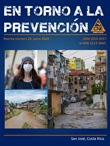REVISTA EN TORNO A LA PREVENCIÓN
CENTRO DE DOCUMENTACIÓN E INFORMACIÓN CSS
REVISTA EN TORNO A
LA
PREVENCIÓN
CENTRO DE DOCUMENTACIÓN E
INFORMACIÓN
DIRECCIÓN DE GESTIÓN DEL RIESGO
COMISIÓN NACIONAL DE PREVENCIÓN DE RIESGOS Y ATENCION DE EMERGENCIAS
ISSN: 1659-3057
EISSN: 2215-3845
PRESENTACIÓN
|
| Visite toda la colección del |  |
|
|
